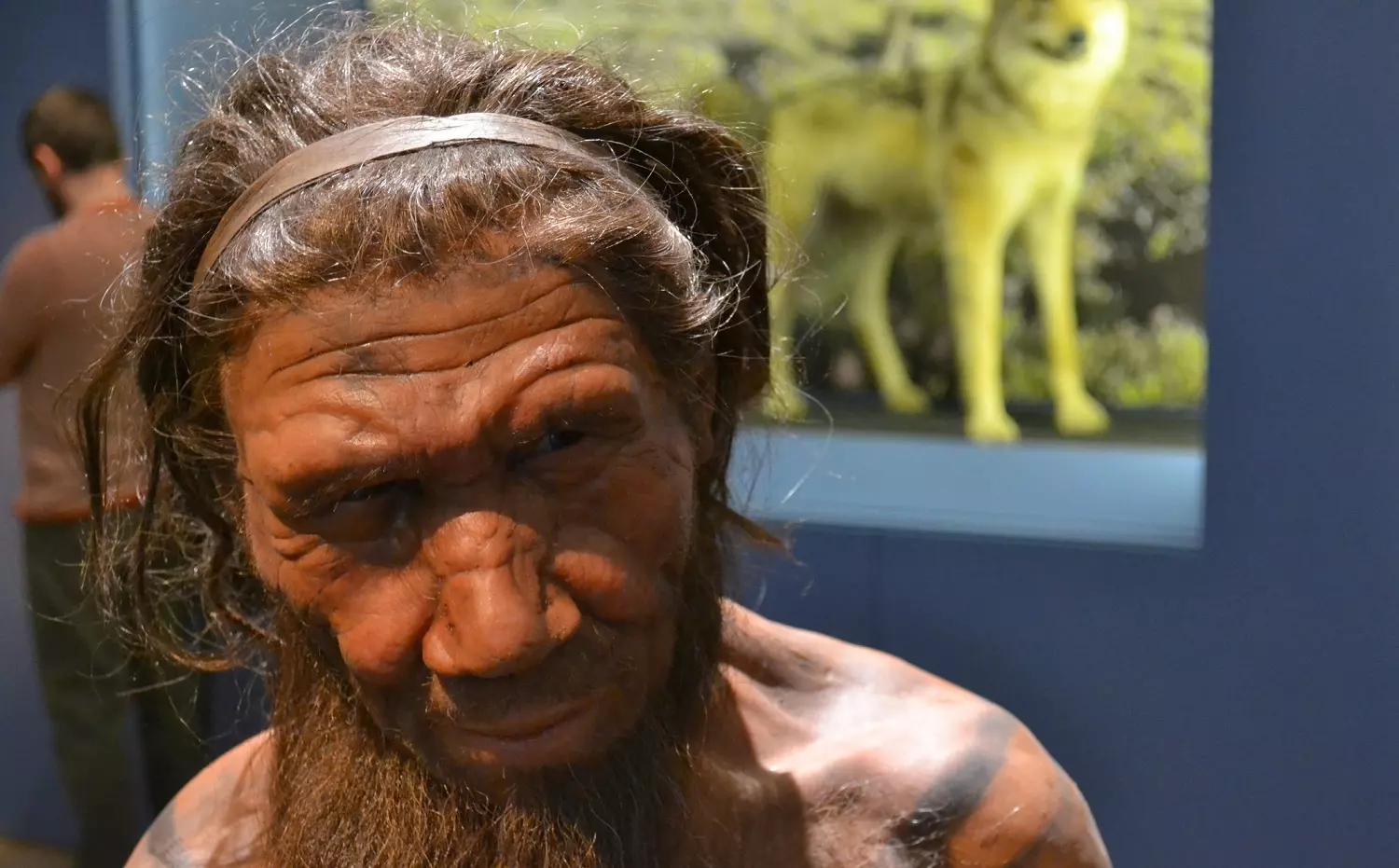[Originally published in 2016 as The Art of the Neandertal]
New research from the Max Planck Institute implicates Neandertals in the creation of tools and ornaments from the Grotto du Renne deposits in France.
The work by Welker and colleagues describes molecular analysis of bone fragments recovered from the Châtelperronian deposits of Grotto du Renne. The Châtelperronian is known for its sophisticated tools, body ornaments, and pigments, all of which imply a human-like ability to manipulate the environment. Interpretations of these Châtelperronian artifacts is complicated by the radiometric dates assigned to them.
Conventional dating places the Grotto du Renne deposits right around the time that Homo sapiens was mingling with and replacing Neandertals in Europe. If that were the case, then where did these Châtelperronian artifacts come from? Were they made originally by Neandertals? Did Neandertals learn to make them from Homo sapiens? Or were they made exclusively by Homo sapiens?
The Grotto du Renne site is also known for its Neandertal fossils, and this new study adds to that by identifying additional Neandertal bone fragments from the site using molecular techniques, including sequencing ancient DNA. These results do not settle the finer questions of how Neandertals learned to make Châtelperronian artifacts but instead add to the growing evidence of Neandertal ingenuity and artistic ability.
For example, a recent study revealed evidence of Neandertals using eagle talons (Radovčić et al. 2015) and marine shells (Zilhão et al. 2010) for jewelry and evidence of Neandertal bone tools (Soressi et al. 2013). There is also extensive evidence for Neandertals using pigments like red ochre (see Cârciumaru et al. 2002; Soressi and D’Errico 2007; Zilhão et al. 2010; Roebrooks et al. 2011).
There are even artifacts that have been interpreted as Neandertal sculptures. A small stone from northern Spain has marks that indicate chipping and pecking to shape it (García-Diez et al. 2013). Some researchers even claim that a peculiar artifact of stone and bone from central France is a Neandertal mask (Marquet and Lorblanchet 2003).
Not all of this evidence unambiguously points to Neandertal artistic ability (especially the “mask”), but the sheer weight of evidence supports Neandertals wearing animal parts for ornaments and using pigments to decorate their bodies or other objects. Neandertals had an artistic side that went beyond just the practical use of tools or fire.
The meaning of Neandertal art depends greatly on our understanding of what exactly Neandertals are. From an evolutionary perspective, Neandertals are close cousins of modern humans, and we should not find it surprising that they exhibit hints of the advance cultural behaviors that characterize modern people. An evolutionary creationist might suggest that Neandertals reveal to us the gradual emergence of behaviors and abilities that would permit us to enter into a relationship with our Creator.
Old-age and young-age creationists approach the evidence differently
Some old-age creationists claim that Neandertals are not human at all. Instead, they are just soulless animals that happen to look a lot like us. For these individuals, the evidence might be viewed as unconvincing. Perhaps the Neandertals strung up animal bones and claws or used pigments for practical purposes. Even today, some hunters might camouflage their faces using face paint. Since there are no really astonishing works of art that unquestionably come from the hands of Neandertals, an old-age creationist is probably not bothered by the evidence for Neandertal art.
The majority of young-age creationists view Neandertals as fully human and descended from Adam and Eve. I have previously argued that these humans appear to be disadvantaged because they lived in the centuries immediately after the shattering of culture at the Tower of Babel. Thus, I would expect that Neandertal art would not be extravagant mostly because Neandertals had more important skills to cultivate, skills of obtaining food and shelter.
Which perspective is better?
The evolutionary perspective leaves the science unchallenged but raises important theological questions about the creation of humans. If the Neandertals exhibit signs of humanness that we might otherwise associate with the “image of God,” what exactly is that image and to what creatures was it given? Likewise, human evolution in general challenges the notion of a historical Fall, a very important theological concept in Christian thought.
The old-age perspective leaves us with animals that have very sophisticated behaviors. They use fire, make tools, hunt, cook their food, and make simple artistic enhancements to their environment. Calling such creatures animals seems unfair to our knowledge of Neandertal culture. Still, the old-age creationist can affirm a unique creation for the image of God and a real, historical Fall.
Like the old-age creationist, the young-age perspective preserves traditional theological ideas about the image of God and the Fall. Unlike the old-age creationist, the young-age perspective is more inclusive towards evidence of human behavior in Neandertals. For a young-age creationist, the culture of Neandertals makes sense because Neandertals are human. The challenge for the young-age creationist comes from re-interpreting a much larger body of evidence regarding the geological context, radiometric dating, and genomics. Whether or not these challenges are insurmountable remains to be seen.
References
Cârciumaru et al. 2002. The Cioarei-Borosteni Cave (Carpathian Mountains, Romania): Middle Palaeolithic finds and technological analysis of the lithic assemblages. Antiquity 76:681-690.
García-Diez et al. 2013. Neanderthal Graphic Behavior: The Pecked Pebble from Axlor Rockshelter (Northern Spain). Journal of Anthropological Research 69:397-410.
Marquet and Lorblanchet. 2003. A Neanderthal face? The proto-figurine from La Roche-Cotard, Langeais (Indreet-Loire, France). Antiquity 77:661-670.
Radovčić et al. 2015. Evidence for Neandertal Jewelry: Modified White-Tailed Eagle Claws at Krapina. PLoS ONE 10(3):e0119802. doi:10.1371/journal.pone.0119802.
Roebrooks et al. 2011. Use of red ochre by early Neandertals. PNAS 109:1889-1894.
Soressi and D’Errico. 2007. Pigments, gravures, parures: Les comportements symboliques controversés des Néandertaliens. In . Les Néandertaliens. Biologie et cultures. Document préhistoriques 23. Éditions du CTHS, Paris, pp. 297-309. [PDF]
Soressi et al. 2013. Neandertals made the first specialized bone tools in Europe. PNAS 110:14186–14190.
Welker et al. 2016. Palaeoproteomic evidence identifies archaic hominins associated with the Châtelperronian at the Grotte du Renne. PNAS doi: 10.1073/pnas.1605834113.
Zilhão et al. 2010. Symbolic use of marine shells and mineral pigments by Iberian Neandertals. PNAS 107:1023-1028.







